Raising a dog is a long and consistent work to develop certain pet skills. Together with training, it contributes to the socialization of the animal, makes adjustments to its nature and makes it easier to care and maintain. In this article, we will dwell in detail on the nuances of educating and training the favorites of breeders - spaniels.
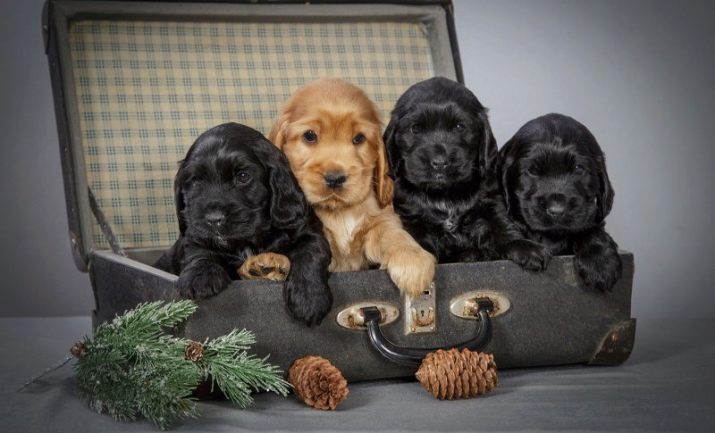
Features of behavior and character
The nature of the spaniel can be different, which is explained not only by its varieties, but also by the conditions in which it is placed after the nursery. Be it English, Russian or American Cocker Spaniel, there are certain rules: for a dog to grow up as a friend and helper, in addition to daily activities and regular training, she needs human care, attention and affection. Despite his physique, Spaniels are gambling and playful.
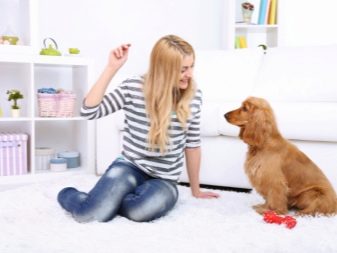
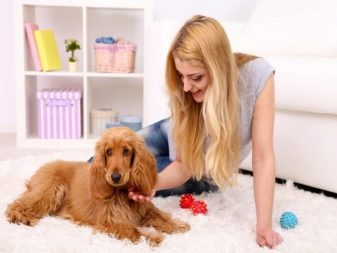
Being on the wave of positive, they need timely training, otherwise they risk becoming stupid.
Spaniels are very friendly and curious. They strive to be in the company of those who deal with them, love and feed. In the absence of proper attention and long loneliness, destructive behavior is characteristic of them. Therefore, the breeder of these dogs must have enough time so that he can raise a good friend and faithful companion from the pet.
Dogs of this breed characteristic of the willingness to please his master. This trait can be taken as a basis for education and training, achieving through it the facilitation of classes.Dogs understand what is needed of them, they subtly feel the intonation of the voice and manner of speech. They possess excellent adaptability, patience, as well as energy.

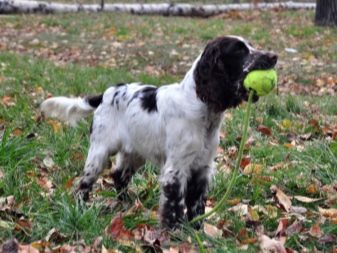
But, along with advantages, the character has negative sides. For example, animals can be stubborn and independent. A dog can weigh the relevance of each given command, considering whether it really is worthy of execution.
With improper training, the pet takes on the role of educator and often manipulates the owner.
At what age should I start raising?
As a rule, puppies are taken from the kennel in 2 months. At this time, they are already getting acquainted with such a concept as socialization, have a stronger psyche. Two-month-old puppies are active, learn to play with each other, stand well on their paws, run a lot and constantly move. Considering that the period of getting used to a new place and owner can last for 6-7 months, the sooner the puppy is taken, the better.

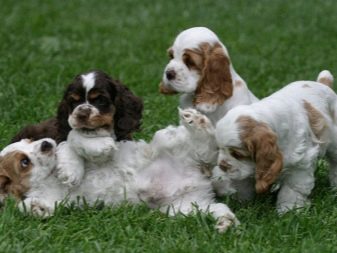
However, experts recommend having time to pick up the puppy no later than three months.
This is explained by the fact that at a later age the dog will not be particularly eager to strive for training and education. Moreover, the speed of learning may slow down, self-will and persistence may appear. So, the minimum age for starting school is 2 months, the maximum is 3.
The subtleties of raising a puppy
They begin to raise the baby immediately after he appears in the house, choosing a day off for this. If you give him a lot of time to adapt, you can miss the time to stop the wrong behavior. In the early days, you can put a heating pad or a small fur mattress on the couch. Under no circumstances should a puppy be put on a person’s bed. They teach a puppy to the place from the first day of stay in a new house.

To do this, pat on the litter and pronounce the word "place". Along with this, the baby begins to be accustomed to his nickname. This is an important step on the path to training, because first the dog must learn to understand when the owner addresses it. On the very first day, the puppy can be washed so that until the evening it is dry and plenty of running. Then it is washed no more than once a month.
The owner feeds the puppy, he walks, strokes, communicates and plays when the baby requires attention.
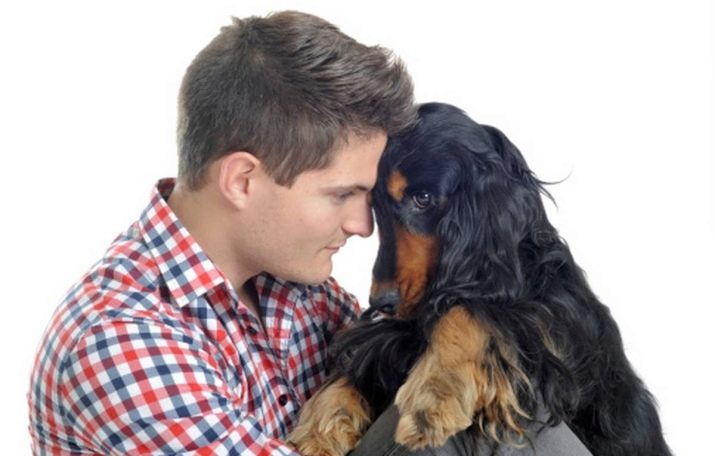
However, it is impossible to spoil the spaniel too much, because in the process of training the dog understands that there are times when the owner cannot pay attention to it.
There should not be any increase in voice, as well as a cry in communication and education. Paws and stomach are wiped after each walk, washed as necessary so that dirt from the street does not enter the rooms of the house.
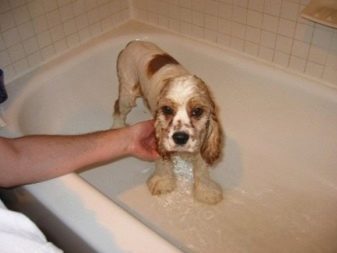
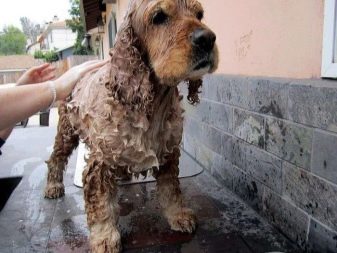
It is especially important for the baby to take care so that he does not feel lonely after separation from the dog mother. They call the puppy by name during the games, pet and talk to him. They buy toys for the kid, play with him, while talking and addressing by name. As you understand, you can teach your puppy elementary commands, such as “not allowed”, “fu”, “to me”. In the first months of life, when pronouncing a command, there should not be extra words and huge tirades: the pet simply won’t understand what is required of it.
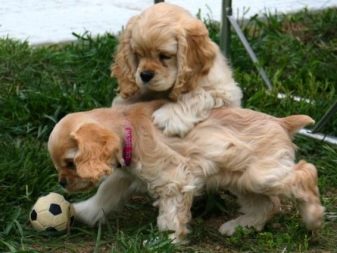
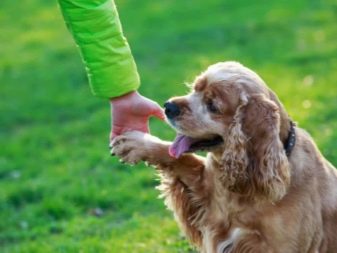
Along with accustoming to the nickname, own place and some simple commands, the owner should regularly carry out hygiene procedures. You can’t allow a puppy to walk in the house dirty, you need to brush his ears, comb his hair, take care of the condition of his teeth. If you accustom a baby to hygiene from childhood, it will become the norm for him, and therefore he will not be nervous during its implementation.
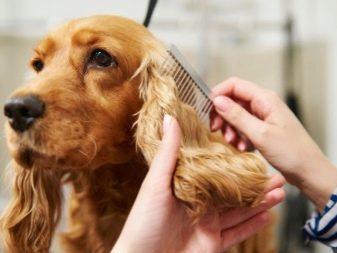

If during the game a pet grabbed an object with its teeth, you can not pull it out by force.
You can’t keep the spaniel on a leash all day, the baby can break the chain, whine and complain in his own way, which will bother all neighbors. In addition, he can become aggressive, which can turn into a problem of education.
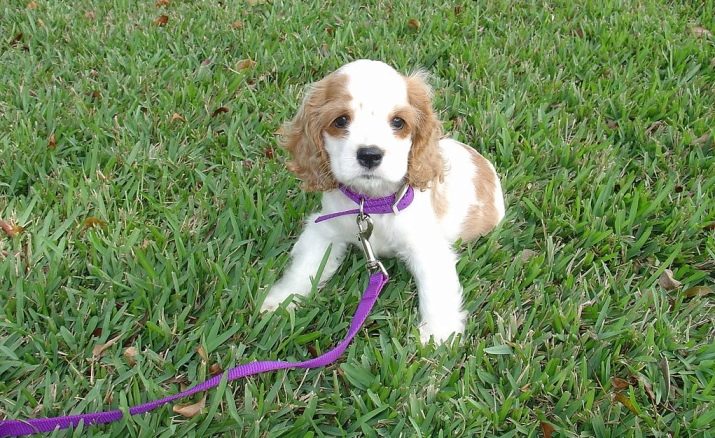
At first, a dog living in an apartment building will have to be taken for a walk in his arms.Someone uses a backpack for this, and the puppy quickly realizes that he is going for a walk as soon as he sees the backpack in the hands of the owner.
How to train a dog?
When the spaniel turns 3-4 months old, he must be accustomed to the team "next." In addition, at this time, it is time to teach the pet the “stand”, “show your teeth”, “collar” commands. At this time, the baby understands the hours of eating, if the owner feeds him in time. For upbringing and training to be successful, several key rules must be considered.
- Everything has its time. If you shift the education and training from day to day, writing off everything for the lack of time, it will not work to educate the dog.
- Regularity. It is necessary to train a pet every day so that the animal can strengthen its skills, accustoming itself to the norms of behavior.
- Moderate load. You can not mix several teams at the beginning of training, because the pet will confuse their meaning.
- Patience. If the baby performs the command correctly, it is necessary to encourage him, if he cannot learn the lesson, you can not raise his voice and offend him with a lack of attention.
- Game approach. Spaniels are tricky animals, and therefore monotonous training can quickly bother them. Without a creative approach, they will get bored and try to take the parenting initiative into their paws.
- Personal contact. Do not shift the training and training to someone from the outside, because personal communication is the key to a trusting relationship between the owner of the dog and the pet itself.
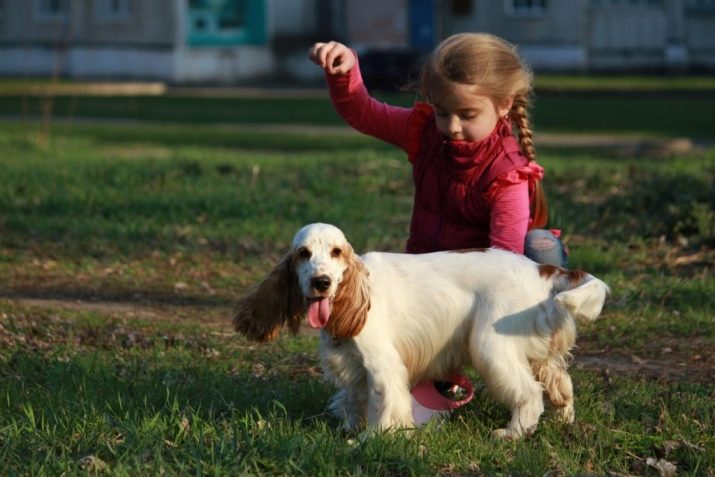
Water and swimming training
About six months later, the puppy should already understand the command “bring me”. At this time, he is ready to learn how to swim, for which the owner must choose a sunny day.
A small pond with sloping shores is suitable for this. In order not to scare the dog, you cannot deliberately pull it into the water.
For the first time, you can use the usual wooden stick for the pet.
She is thrown into the water so that she is in the water at a distance of about one meter from the shore. Immediately the owner gives the command "give", but the stick should not be where it will be deep. Because the spaniel will bring her, he is encouraged by affection or dainty. If the dog is not afraid of water, you can try to throw a stick a little further.
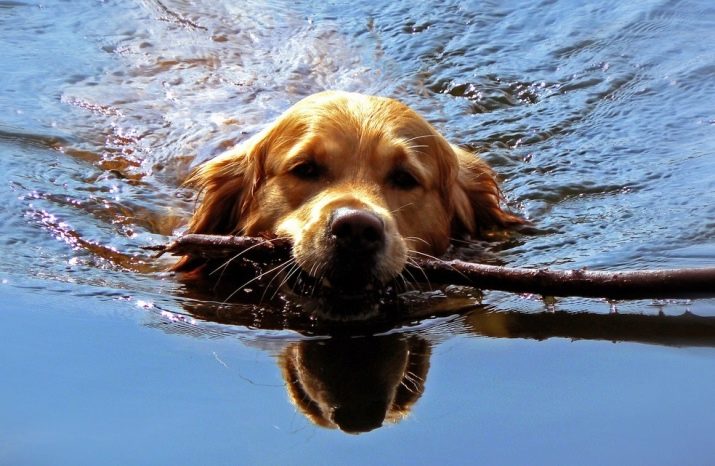
As a result, repeatedly moving away from the shore in search of a stick, its paws will cease to reach the bottom, which will cause a swimming reaction. However, you can’t laugh at the pet by constantly throwing the stick into the water: after a few throws, it needs rest. If you do not turn her attention to running or just riding in the grass, the training will seem to her something exhausting, and therefore she is unlikely to want to repeat this in the future.
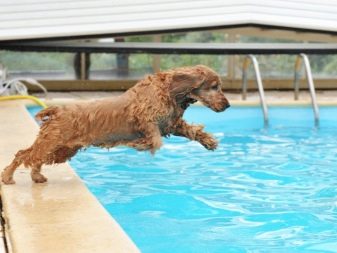
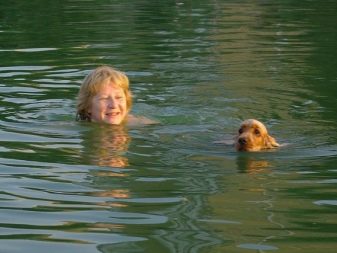
Main teams
Spaniel training involves the execution of different commands. For example, a trained dog should understand not only its place, but also its name: she should be able to swim, walk next to the owner, sit or lie at his request. Besides, the animal must have an understanding of the concepts of "slow motion" and the search for "shuttle". He must have developed hunting skills, watchdog qualities and jumps.
A trained dog from four months old goes to the toilet on the street. She is accustomed to a collar and leash and actively responds to the team "walk". Team outfit "Give" and "sit" she perfectly understands how and the team how “Seek” which she is accustomed to willingly, due to the use of various delicacies for this.
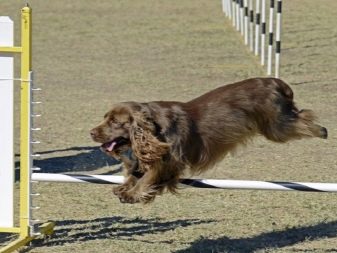
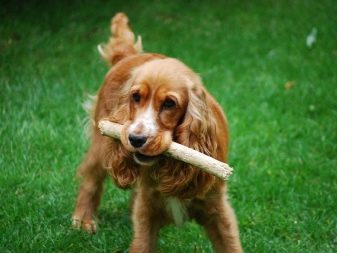
In order for the owner to quickly accustom the pet to the toilet, at first it is necessary to provide the puppy with a box with sawdust. This will reduce the puppy's desire to meet his needs, anywhere.
In the future, you will need to take him out more often, at the same time, walks should be frequent, but short-lived. Over time, their duration increases, and the number decreases.
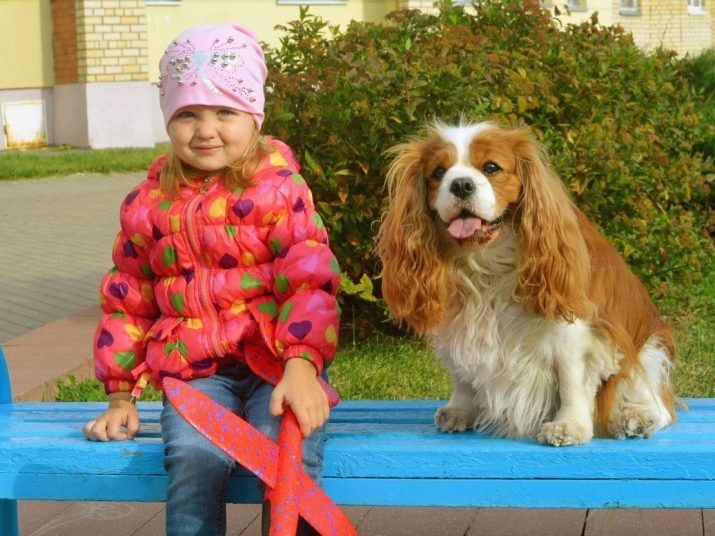
General recommendations
Classes of training a spaniel at home are hard work that does not tolerate inattention and letting the situation go by itself. During training, the dog must learn not only to carry out any commands spoken by the owner. She also needs to understand and stop certain actions at the owner’s command.
The basis of training can take the training of I. P. Pavlov, allowing to develop reflexes taking into account conditioned and unconditioned stimuli. The dog can act on the dog in different ways, for example, by encouraging or banning. To turn a promotion into a conditioned stimulus, you need to connect some goodies to it. With frequent promotions, the dog will quickly understand what is required of it, and this technique will favorably affect its affection for the owner.


Forcing a spaniel to train is useless. Neither a leash jerk, nor a blow with a rod, nor threatening intonation will make the spaniel obedient and complaisant. On the contrary, they will become the causes of the dog’s insecurity and fear of the owner. To prohibit the pet from doing anything, it is enough to say the command "no." Of course, at first it will not be easy to get used to the same leash or collar.
However, than shouting and beating an animal, it is more advisable to come up with a more positive way to teach it.
You can’t sharply pull the collar, even if the pet really wants to run away in the study of the world.
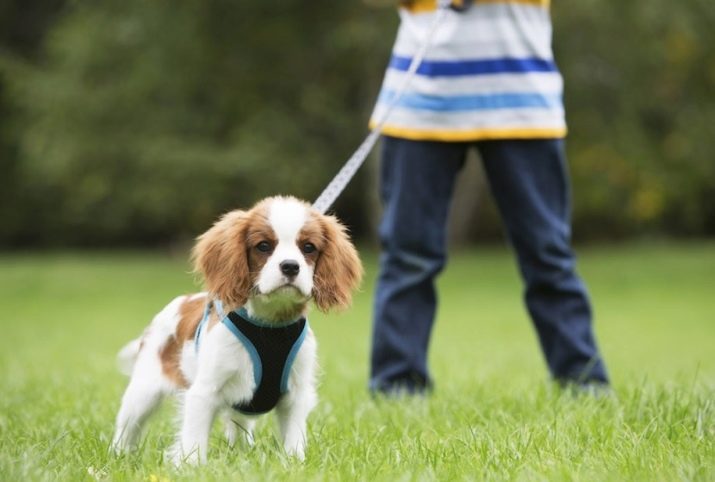
By this, the owner shows superiority, but this does not contribute to the proper relationship. The principle of training should be based on team unity, action and encouragement.
For example, the “sit” team is taught to gently push the puppy’s croup. As soon as the pet has sat down, it is praised and encouraged. The “take” team is taught during one of the feedings. They give him food at the command "take", thereby accustoming him to restraint, because the dog must understand the order. Otherwise, for example, on a hunt, she may rush for game ahead of time.
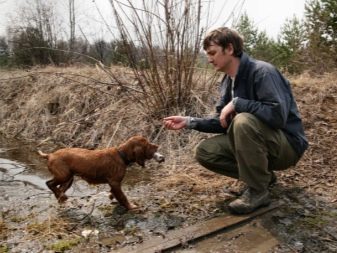
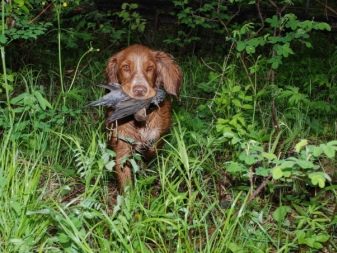
The team "can not" begin to work out with the "young claws" at the bowl. At the same time, food is given on a “take” command, so that the puppy understands what he was allowed to eat. At the initial stages of the training of the command "no" you can use a leash. In the future, it is removed, trying to evade physical impact. The “to me” team is considered one of those puppies get used to faster than others.
You can teach a puppy to her literally in a month using reward techniques. You can call him to yourself, treating with some delicacy. However, when summoning a pet, you must remember and follow the procedure. First they give a command, then they show a treat and only after that comes reinforcement. When training, you can use the whistle: it will serve as a kind of signal for the execution of the team.
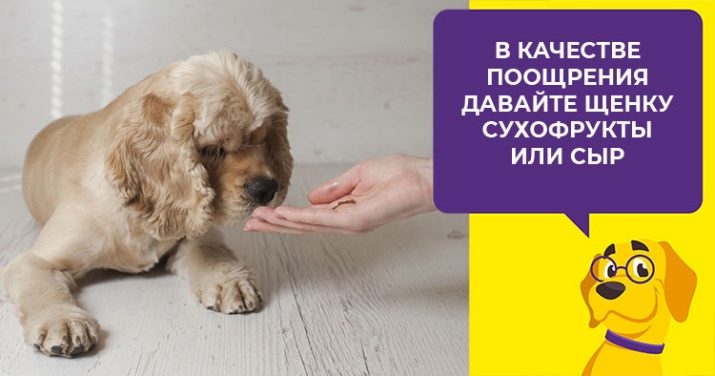
See the video below for more on training the spaniel.








































